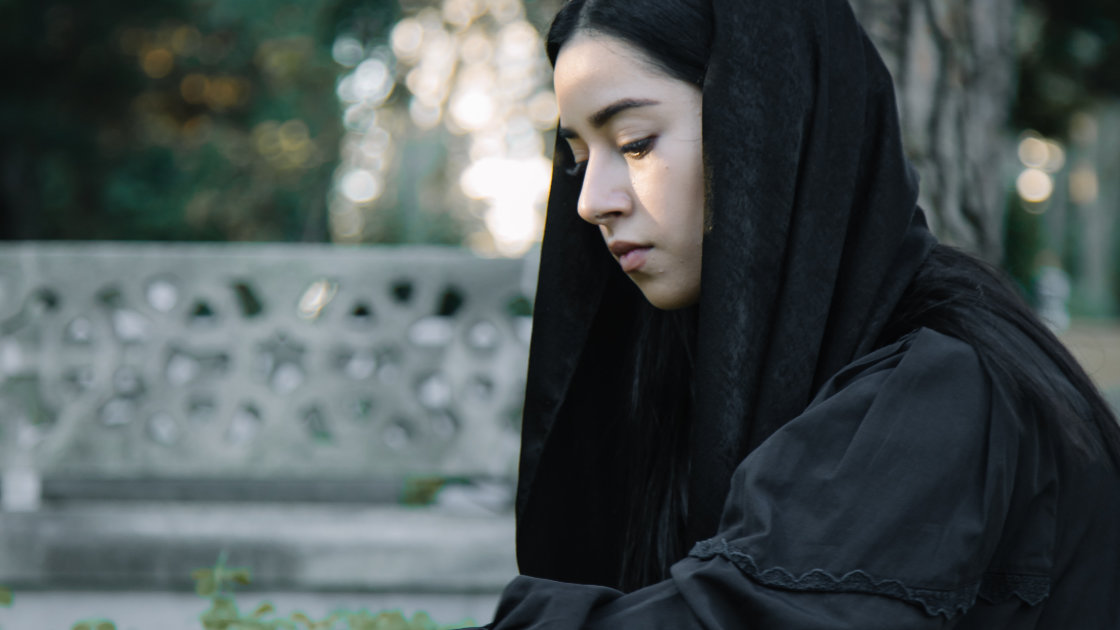It’s great when visitors are interested enough in history to ask questions that lead to amazing discussions with interpreters. This summer, we’ve had a lot of great questions that have helped expand our understanding of life during the 1800s. This week’s question was about “Widow’s Weeds” during the mid-to-late 1800s.
“Widow’s Weeds” is an 18th century term for the black crepe fabric widows would often wear while mourning their loved ones. It comes from the Old English word “waed”, meaning “garment”. Prior to the Victorian period, it was considered customary to mourn lost loved ones but the Victorians took it to a whole other level. They developed and encouraged certain rules of behavior that were particularly focused on widows. It was customary for a widow to go into what was called full mourning for a year. During this time she was to wear a veil (the widow’s weeds) over her face, she was not permitted to attend social functions, or generally be seen out in public. Then, for another half-year up to a year she was in half-mourning and was permitted to attend some social occasions and could start adding more texture to her black wardrobe. During her last six months of mourning, the widow could start adding more color to her clothes including white, gray and light purples. The Met in New York had a great display about mourning fashion.
After her period of mourning ended, women were expected to remarry-particularly if they were young and had inherited money. A widow was somewhat socially dangerous; she no longer had a male protector (either father or husband) and as a widow could own property, this could give her a level of freedom unknown to her peers as she would be able to engage with men with a slightly more equal standing in society. A widow could gain some power without losing her reputation. This side was often seen in political cartoons through the 1800s.
Men had it a bit easier. If they were a ‘junior’, they couldn’t drop the junior from their name until their father was buried. Men’s mourning clothes were not that different from their regular daywear. A widower was generally expected to be in mourning for about 6 months to a year for his wife.
Mourning was very expensive. Like today’s wedding shops, the 19th century saw mourning parlors where people could go and buy anything they needed. Going into mourning could bankrupt a family. Oftentimes, frugal family members would just overdye their clothes to make them black. A method often used by individuals of limited disposable income was to wear a special armband. Nevertheless, proper society considered these socially inappropriate for anyone not in uniform.
World War I really saw the end of the strict Victorian standards. With so many people dying during the Great War, it was just impractical to keep the strict traditions. And the 1920s saw the transformation of the widow’s black dress into the little black dress. Today, while many people still wear black to funerals, it is not always necessary. It’s considered more appropriate for people to look well-appointed and to honor the memory of the person.
Now you know a little bit more about life during the 1800s. This blog is written by Katherine Muller, Executive Director of Quiet Valley Living Historical Farm. It is intended to help visitors explore and learn about life on the farm throughout history and as Katherine explores and learns more about the farm too.
